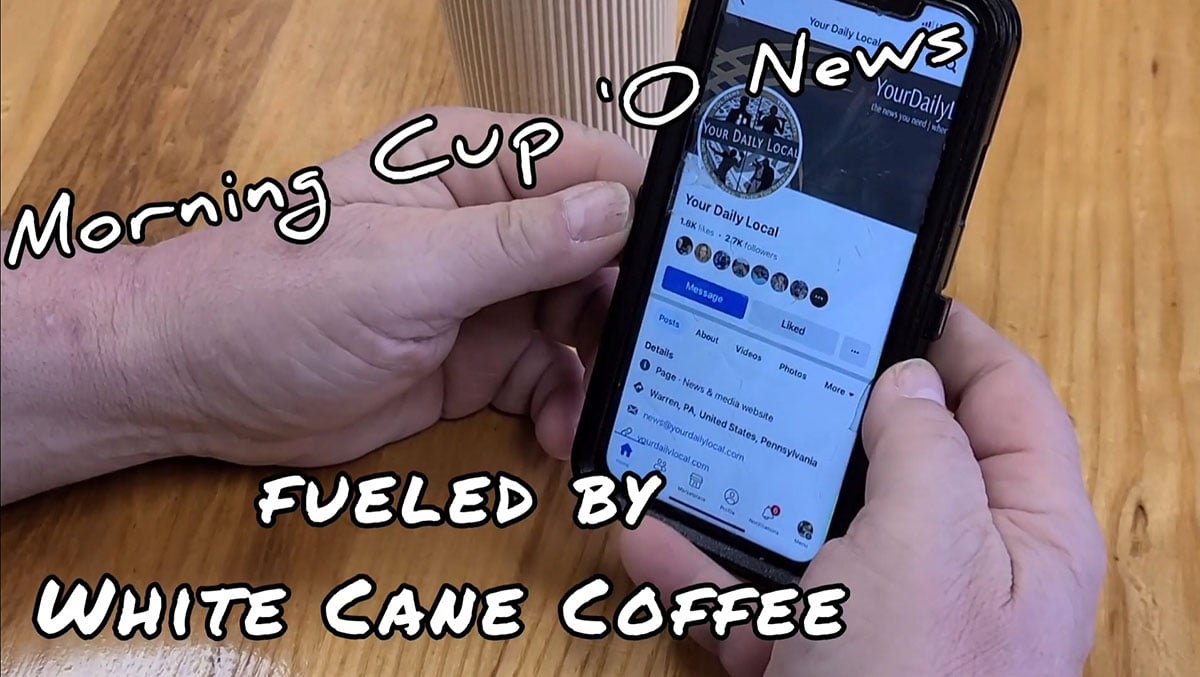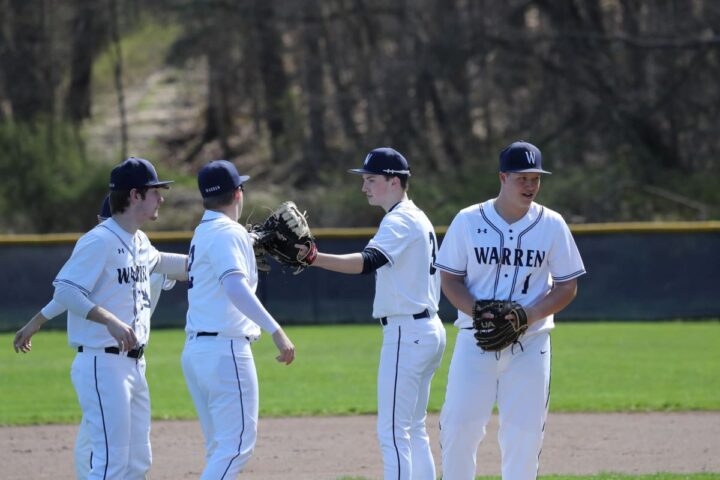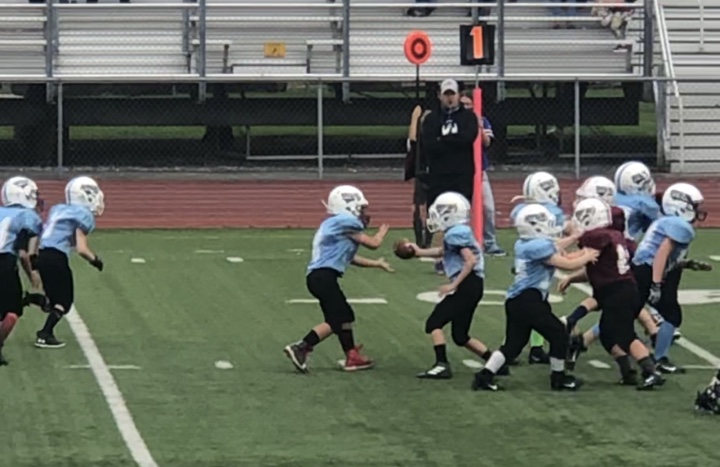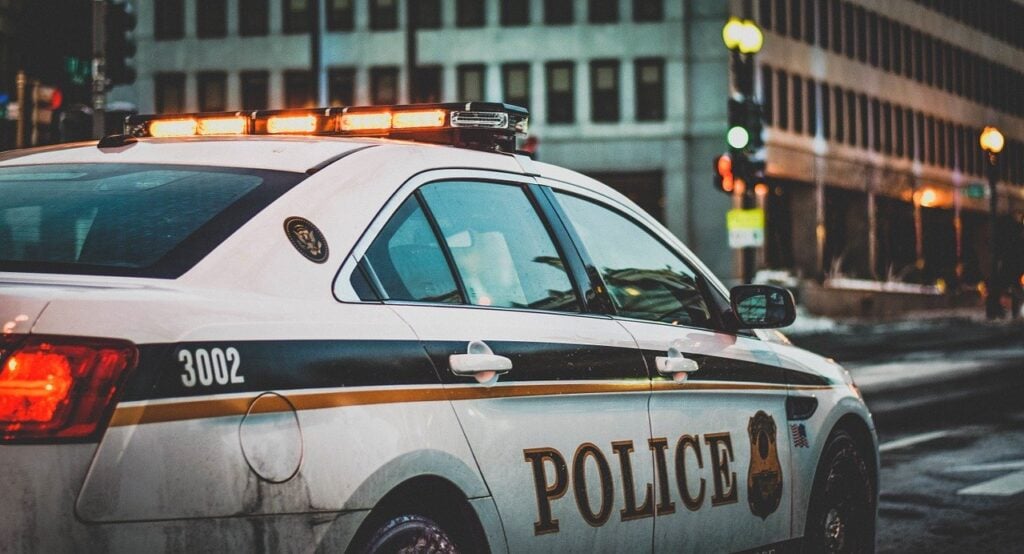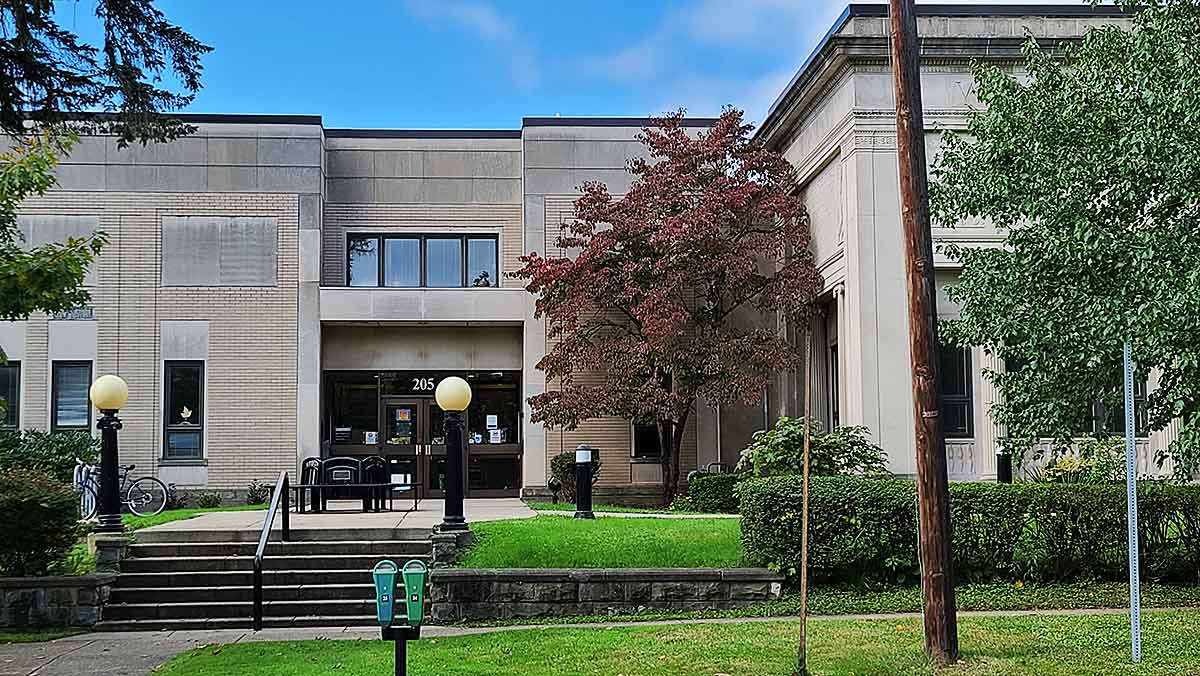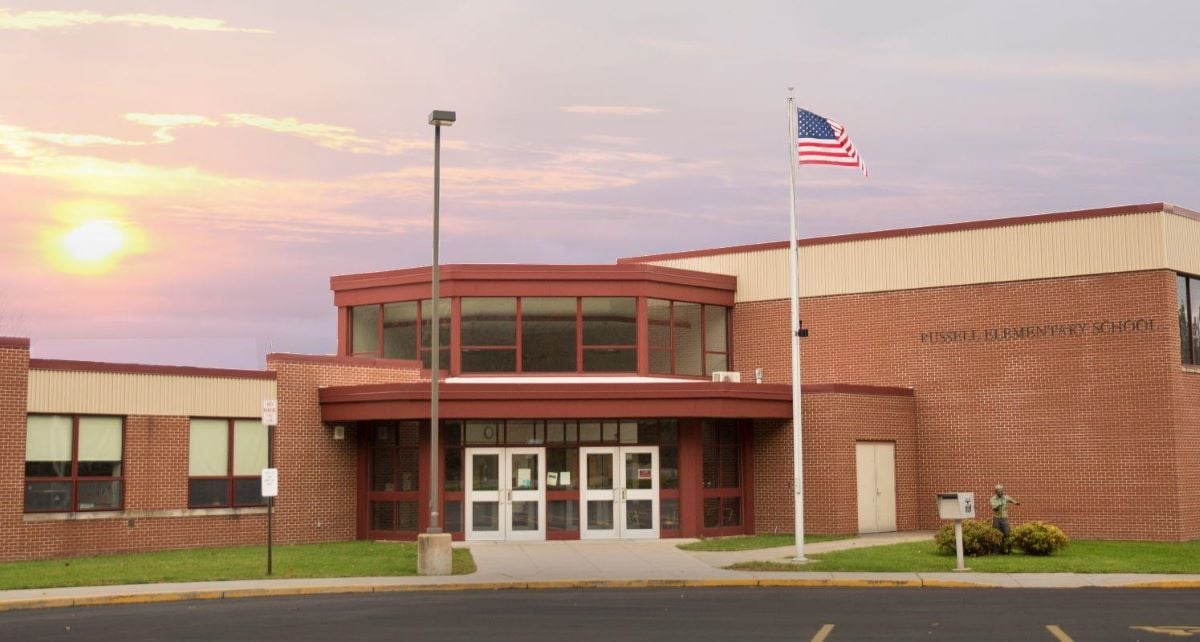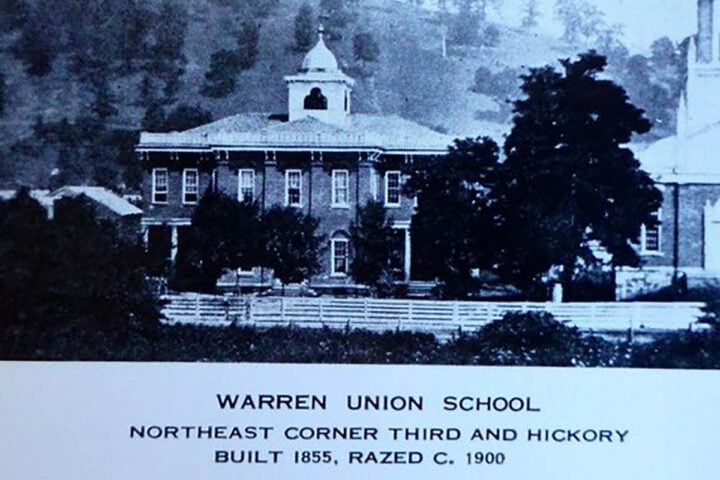Warren County watched with the rest of the country as events on 9/11 unfolded in New York City, Washington D.C. and a field in Shanksville, Pennsylvania.
(FBI photo. Smoke billows from the Pentagon following the Sept. 11, 2001 terrorist attacks.)
The events of that day changed the nation, but in many ways, they were still distant. Warren Countians weren’t in harm’s way that day (though rumors spread of Kinzua Dam as a potential target).
A pair of Warren natives; however, were at the forefront as the United States came under attack.
Warren Area High School Class of 1969 members Kay Brown and Marilyn Sussan (or Marsie Schirck as she was known in school) took separate paths following graduation, but both found themselves near the Pentagon on that day. Brown was working for the General Accounting Office and Sussan for Inter-American Development Bank.
Brown’s office was between the Capitol Building and the White House, while Sussan’s office was just two blocks from the White House. Sussan’s husband, Bob, was living in an apartment on Park Avenue, between 24th and 25th Streets, less than two miles from the World Trade Center.
Brown and Marilyn were in their offices, while Bob, who had been up late the night before helping a friend, was asleep in his apartment, when the attack began.
8:46 a.m. American Airlines Flight 11 hits the North Tower of the World Trade Center
“We had a 9 o’clock meeting every Tuesday, and I heard about the first plane hitting the North Tower just as I was about to go into the meeting,” Brown said.
Offices equipped with televisions were still a rarity in 2001, but an investment group on one of the upper floors in Marilyn’s building was tuned to New York news and informed the rest of the building almost immediately.
“There were only a certain number of TVs in the building at that time,” she said. “By the time we got one tuned in (on our floor) we just saw the aftermath of the first, then saw the second plane hit.”
In New York, there was chaos.
“I was sleeping when the first plane hit,” Bob said. “But I looked out my window and just saw all these people running down Park Ave.”
The chaos and confusion was only going to grow.
9:03 a.m. United Airlines Flight 175 strikes the South Tower of the World Trade Center
“We didn’t know what was going on in New York,” Bob said. “We didn’t know if we were under attack. After the second plane hit, people were just running from downtown.”
An armory close to his apartment served as one of the first places people began to gather, both for recovery and security.
“The armory was one of the first spots where they started to bring the bodies, and some of the possessions from Ground Zero,” Bob said. “I went downstairs and there were people with Army uniforms on and bayonets mounted to their M-16s. Nobody knew what was going on.”
In D.C., people in Marilyn’s office almost immediately grew concerned that buildings in Washington might become targets.
“By the time the second one came, we were already hearing news coming from the military to our local stations,” she said. “People were questioning whether they were safer in the building, or at greater risk.”
After hearing about the second attack, many in Brown’s office were in a state of disbelief. They too, wondered if they weren’t in prime position for another attack. Adding to the stress, were the number of unfounded reports coming in.
“There was a lot of speculation on the news about D.C. as a target, not to mention the fact that we were all acutely aware that our office was located midway between the Capitol building and the White House,” Brown said. “Also, unsubstantiated rumors started to spread about fires on the national mall and possible attacks on the Washington monument.
“At the same time, we heard from two staff members at National Airport who had planned on flying that day to make a site visit,” she continued. “They called to tell us they had been ordered to evacuate from the airport immediately, which raised all kinds of alarm bells with us.”
The alarm bells had good reason to sound.
9:37 a.m. American Airlines Flight 77 hits the Pentagon
“When the Pentagon was hit, the threat to D.C. became palpable,” Brown said. “Dred turned to reality. Schools began closing down. People began leaving town to try to get home to their families, and to pick up their children from school.”
One of the main concerns with leaving, both Marilyn and Brown said, is the traffic congestion a mass exodus would cause. The fear that that congestion would make them even bigger targets prompted many to stay put.
“Anytime the government shuts down in DC, mass traffic jams are guaranteed,” Brown said.
“We were trying to find out what the federal government was doing with people,” Marilyn added. “When everyone goes out at the same time, it’s a stand still. We would’ve been sitting ducks.”
Meanwhile, in New York, the search was on not just for survivors, but to see if more destruction was to come.
“(The uniformed service members) were opening doors on trucks, and leaving them open,” Bob said. “They were checking for bombs.”
Phone lines were either down, or so overwhelmed with calls that they were virtually useless. This only made it more difficult for people to make informed decisions about their next steps.
“The island (Manhattan) was locked down,” Bob said. “Soldiers were walking around. The phones weren’t working, so we had no idea what was going on.”
The confusion wasn’t limited to Manhattan.
“Decisions were complicated by the fact that phone service was extremely unreliable,” Brown said. “Many calls were not getting through at all. I was able to communicate with my husband using email and, I think, some texts.”
The lack of clear communication also made every piece of information that did get through more valuable, even if it was only rumor.
“We were trying to find out what was happening,” Marilyn said. “We heard the subway was shut down, then no, it’s going to run. There was a lot of tremendously confused misinformation.”
One piece of information that all seemed to agree on only added to the fear. Another plane was on its way to Washington, with either the White House or the Capitol Building in its sights.
“We knew very quickly that we could be a target,” Marilyn said. “There was a period of real anxiety until we learned the flight coming to (D.C.) had been averted.”
9:59 a.m. The South Tower of the World Trade Center collapses
Those close to the World Trade Center had already watched in horror as people leapt from the top floors of the burning buildings. The horror turned to panic as the steel gave way and the South Tower crumbled to the ground.
“I saw a lot of people running away,” Bob said. “There was debris all over the streets, and the smell was pretty acrid.”
10:03 a.m. United Airlines Flight 93 crashes in a field near Shanksville, Pennsylvania
When passengers aboard United 93 learned what was happening in New York, they decided to try to take back their plane. They stormed the cockpit and caused enough turmoil that the plane hurtled into the ground in a field in Pennsylvania.
Their actions and sacrifice not only saved hundreds of lives, but also helped give those in Washington a sense of clarity.
“There were so many questions at the time, ‘How widespread is this?,’ ‘What’s really happening?,’ ‘Is war starting on our own soil?’,” Marilyn said. “There was confusion and a lot of concern until we heard Flight 93 was down.”
10:15 a.m. A portion of the Pentagon’s E ring collapses
“My big boss, the Comptroller General, soon made an announcement that our building was a safe and secure place to be, and he strongly suggested we stay put for the moment,” Brown said. “We were hearing nightmares about traffic jams everywhere, and people were afraid to ride the metro for fear of more attacks.”
10:28 a.m. The North Tower of the World Trade Center collapses
While Marilyn and her co-workers feared for their own safety as word of more hijackings spread, they also tried to offer comfort as one of them had family in the World Trade Center.
“One of my colleagues had a son and daughter in-law in New York,” she said. “His grandchildren went to the daycare in the World Trade Center. And he couldn’t reach his son.”
Marilyn and others offered what support they could while their colleague tried desperately to reach his family.
“We were watching him try to keep his calm, but we were all really concerned about that situation,” Marilyn said.
They eventually learned that his entire family was safe, one of the few bits of good news that day.
“His daughter in-law got them out,” Marilyn said. “They started running, but eventually she put one kid under each arm and ran. They evacuated to New Jersey, which made it even harder to find them.”
Heading home
As the skies cleared of commercial aircraft, those anxiously awaiting another attack began to exhale and make their way home.
“My daughter was in elementary school at the time and we were able to reach some friends who lived near the school, so we knew they had picked her up and she was safe,” Brown said. “Beyond that, I have very few clear memories of the rest of the time I spent at the GAO that day. But I suspect I wandered about a lot in a state of shock, checking the news again and again.
“We all spent a lot of time trying to reach our families outside of DC to let them know we were OK,” she added. “I know it was mid-afternoon when we finally left for home.”
Marilyn and her cohorts had made a plan to walk to an apartment in the city to wait things out, then got definitive word that the metro would be running that day.
“We finally got the information that the metro was running,” she said. “But people were walking all over the place and a lot of the streets were filled with emergency services and first responders.”
Both Marilyn and Brown’s commute took them directly past the Pentagon. What they saw on their way home that day still haunts them.
“We went by it on the metro,” Marilyn said. “Seeing the gaping mess, the destruction and all the emergency vehicles still around, that’s reality hitting you in the face. That was very close to home. We were all in a state of shock, but seeing the damage at the Pentagon was really astounding.”
“We could hear the sirens and see the smoke as we crossed the bridge into Virginia,” Brown said. “Yet the side of the Pentagon we first saw looked intact and undamaged. It was only as we passed it that we could see the gaping black hole that was still smoking and smoldering. I’ll never forget how surreal that seemed—emergency vehicles, fire trucks, smoky air, lives lost, and a symbol of our nation burned and collapsed. It was unimaginable.”
From Bob’s vantage point in New York, there was really only one thing left to see.
“You looked down and couldn’t see the World Trade Center anymore,” he said. “All you could see was smoke.”
Back to normal
Though still mourning, life in most of the country quickly got back to normal routines. In New York and Washington, it would be a long time before any sense of normalcy returned.
“I had a lot of friends in the police department who went to clean up Ground Zero,” Bob said. “It was interesting to see New Yorkers cheering the first responders. People lined the streets for weeks, cheering first responders.”
One other thing Bob noticed was how accommodating people were about the shrines and memorials popping up all over the city. Each, he said, became like sacred ground.
“There were a lot of impromptu memorials going up,” Bob said. “One was at a Staples. People started putting pictures, flowers and things on the windows and sidewalks. No one would go near those, not even the people from Staples.”
The state of shock was palpable for days in Washington.
“Everybody was still, to some extent, in a state of disbelief,” Marilyn said. “People were walking around just shell shocked. A lot of people were feeling anxious and vulnerable. It took some days to settle.”
It seemed for a while in Washington, that just as things started to settle, there was a new event to worry about.
“For months, military planes flew over the skies of the D.C. metro area and near the Pentagon, close enough that we could hear them every few hours at night,” Brown said. “Then, of course, the anthrax attacks started shortly after 9/11. When things seemed to start to settle down in 2002, we had the D.C. sniper attacks for three weeks in the fall.”
Despite attempts to get back to normal, things would never be the same again.
“Life changed for us in D.C. after 9/11,” Brown said. “We got used to seeing more law enforcement and military presence. Streets around the capitol were closed. Seemingly overnight, more jersey barriers popped up everywhere, and it took a long time before they were transitioned to less stark-looking concrete flower boxes. Entry into government buildings became more challenging, and new metal detectors were installed in many places. Any innocent pizza box left on the street could lead to a ‘suspicious package’ potential bomb scare.”
















